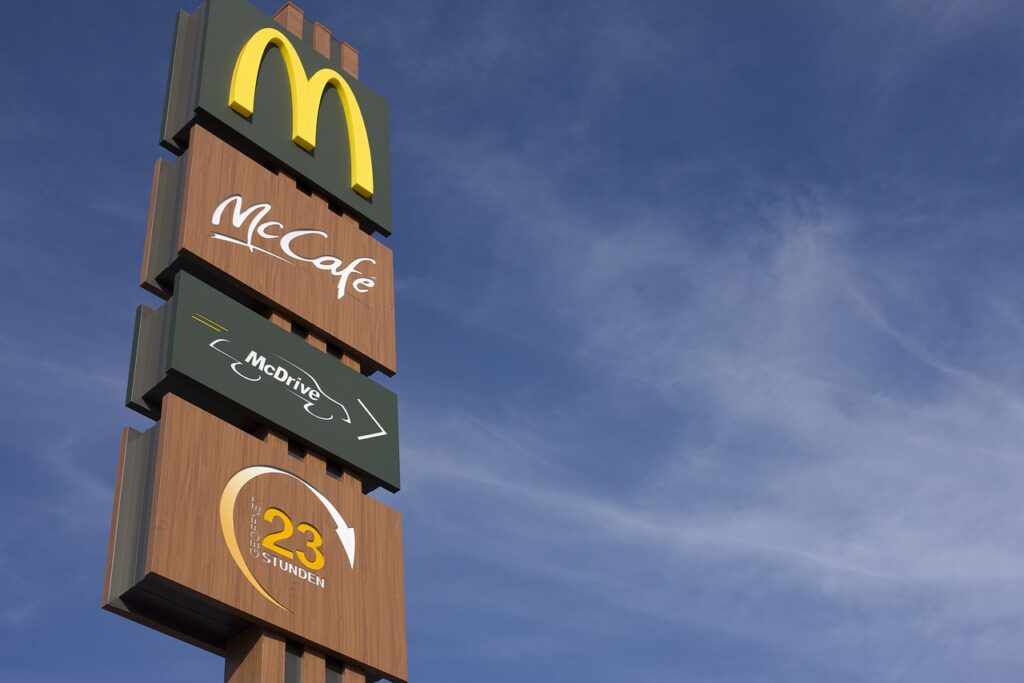Optimizing operational efficiency in a franchise business can lead to a significant competitive edge, higher profitability, and improved customer satisfaction. This informative blog post will guide you through the essential strategies and practical examples of how to improve it. Helping you unlock the full potential of your franchise business.
Key Takeaways
Understand and optimize operational efficiency to maximize output while minimizing input.
Leverage technology, standardize procedures, monitor performance and train employees for improved franchise success.
Implement process optimization strategies such as effective management & leadership, resource utilization & metrics measurement for long term success.
Understanding Operational Efficiency

Operational efficiency is defined as the ability to maximize output while minimizing input by continually observing, examining, and improving processes and systems. This essential aspect of business success aims to reduce time spent on activities or processes that do not bring value and prioritize those that bring value, such as customer satisfaction, increasing a company’s competitiveness and profitability. A number of strategies can be employed to increase operational efficiency. These include process optimization, standardizing procedures, leveraging technology, and monitoring performance. In essence, it is vital in augmenting margins, cutting costs, and increasing quality.
Appreciating the concept of operational efficiency involves recognizing its significance and understanding its key contributing factors. In the following subsections, we will discuss the concept and its key components, laying the foundation for further exploration of the strategies for improving franchise operational efficiency.
The concept of operational efficiency
Operational efficiency involves minimizing waste, mistakes, and inefficiencies while optimizing productivity, quality, and profitability in a business, through continuous improvement. By evaluating fundamental business operations, management can establish metrics that help identify areas for improvement and drive growth. To maintain operational efficiency, it is crucial to measure operational efficiency by monitoring these metrics and making necessary adjustments.
One tool that can significantly boost operational efficiency is Professional Services Automation (PSA) software. PSA software offers a comprehensive platform that serves as the central hub for operations in project- or service-oriented industries, including project management. The primary objective of PSA software is to provide executives with a single, real-time view of the entire business, allowing them to gain insight and achieve a greater level of sustainability by optimizing business processes.
The advantages of using PSA software are numerous. It can help:
Reduce project cancellation rates
Facilitate on-time and on-budget project delivery
Reduce budget leaks
Increase resource utilization
Boost project margins
Ultimately improve the operational efficiency ratio.
Grasping the concept and the available tools for its improvement allows businesses to actively improve their performance.
Key components of operational efficiency
There are several key components of operational efficiency, including:
Process optimization: refining and enhancing existing processes to maximize efficiency and minimize operating costs
Standardization: establishing and adhering to standards and protocols to guarantee uniformity and excellence in operations, which helps to maximize operational efficiency
Technology adoption: implementing and utilizing technology solutions to automate and streamline processes
Performance monitoring: tracking and analyzing key performance indicators to identify areas for improvement and ensure optimal performance
Employee training: providing training and development opportunities to enhance skills and knowledge, leading to increased efficiency and productivity
Technology adoption plays a critical role in utilizing automation and technology effectively. Often through the implementation of a customer service management system that ensures seamless data exchange. By integrating service management systems, businesses can further enhance their customer support and overall efficiency.
Concentrating on these key elements, businesses can achieve marked improvements. In the following sections, we will delve deeper into the strategies for improving franchise operational efficiency and discuss how these components can be effectively implemented in a franchise setting.
Strategies for Improving Franchise Operational Efficiency

Significant improvements in overall operational efficiency in a franchise business can be achieved by implementing process optimization, standardizing procedures, leveraging technology, and monitoring performance. Cloud technology, for instance, can be utilized to reduce operational costs, enhance cybersecurity protocols, and ultimately improve operational efficiency. Ensuring that processes are aligned with current strategic objectives is essential to guarantee that they are suitable and meet the ever-changing requirements of the business. Moreover, comprehending existing processes is crucial to recognizing any inefficiencies and evaluating if each action is beneficial to the ultimate aim.
In the next subsections, we will explore each of these strategies in detail, discussing how:
Process optimization
Standardization
Technology adoption
Performance monitoring
can be employed to improve franchise operational efficiency.
Process optimization
Process optimization involves analyzing and streamlining processes, automating tasks, and reorganizing workflows in order to identify and eliminate inefficiencies. Identifying and eliminating bottlenecks or inefficiencies is the first step towards improving efficiencies. This will help to streamline processes and create more efficient ways of working. Continuous monitoring, resolution, and avoidance of bottlenecks is essential. As it is not a one-time solution but rather a process that requires ongoing attention. Proper maintenance of equipment and technology is another vital aspect of process optimization. As it ensures a more efficient business process by avoiding any unnecessary shutdowns.
Improved operational efficiency and a healthier bottom line can be achieved by franchises focusing on process optimization. Which significantly reduces waste, errors, and inefficiencies.
Standardizing procedures
Standardizing procedures involves ensuring uniformity and efficiency across franchise locations through the implementation of consistent processes and tools. The benefits of standardizing procedures include better customer service, increased productivity, and cost-effectiveness. Implementing standardized procedures typically involves identifying areas for improvement, devising a plan for standardizing processes, training personnel on new procedures, and assessing performance. Notable examples of successful standardizing procedures include McDonald’s. They were able to use standardized processes and tools to improve customer service and reduce costs, as well as other franchisors such as Subway and Burger King.
Franchises can ensure consistency and efficiency across all locations. Leading to improvements and a stronger brand reputation, by adopting standardized procedures.
Leveraging technology
Utilizing cutting-edge technologies can increase productivity, efficiency, and automation while providing timely data insights. Investing in innovative technologies can potentially increase productivity, efficiency, and automation, as well as provide real-time data insights for franchises. Some examples of everyday business processes that can be automated include:
Sending emails
Recording data
Generating reports
Engaging with customers
Automation of these processes can help to keep staff more engaged by eliminating mundane tasks, such as administrative duties, from their workflows.
Franchises can streamline operations, reduce human error, and ultimately enhance their overall operational efficiency by leveraging technology.
Performance monitoring and measurement
Performance monitoring and measurement entails regularly evaluating performance through KPIs and data analytics tools to pinpoint areas for enhancement. Assessing past and current performance assists in pinpointing areas for enhancement and evaluating how approaches have been enhanced. Data analytics tools are utilized to track and measure performance, providing valuable insights to inform decision-making and drive operational efficiency.
Performance monitoring and measurement bring advantages such as the identification of areas for enhancement, measurement of the efficacy of implemented strategies, and affirmation that objectives are being met. Regular monitoring and measuring of performance ensure franchises stay on track with their goals while continually improving their operational efficiency.
Real-Life Examples of Franchise Operational Efficiency

Successful franchises like McDonald’s have achieved operational efficiency through:
Process optimization
Standardization
Technology adoption
Performance monitoring
The concept of franchise operational efficiency refers to the capability of a franchise to effectively utilize its resources and reach its objectives in an efficient way. Examples n practice include McDonald’s, Ageless Remedies, and Precision Door Service. These real-life examples demonstrate that it can be attained through deliberate planning and implementation of tactics such as process optimization, standardization, technology adoption, and performance monitoring.
Following subsections will offer an in-depth look into McDonald’s and other notable franchises’ success stories, highlighting the strategies they used to enhance operational efficiency.
McDonald’s success story
McDonald’s has become a global leader in the fast-food industry by continuously improving its processes, standardizing procedures, and leveraging technology for efficiency. The founders, Richard and Maurice McDonald, developed the ‘Speedee Service System,’ which revolutionized the fast-food industry, and Ray Kroc’s discovery of the restaurant in 1954 significantly contributed to the expansion of McDonald’s into a worldwide franchise.
Leadership, teamwork, and customer focus have been pivotal to McDonald’s success, with the ‘Speedee Service System’ playing a crucial role in establishing McDonald’s as a world leader in the fast-food industry.
McDonald’s success story, which showcases the power of implementing effective strategies to enhance operational efficiency, is an inspiration for other franchises.
Other notable franchise examples
Other franchises, such as Subway, have also achieved operational efficiency through similar strategies. These franchises serve as prime examples of how process optimization, standardization, technology adoption, and performance monitoring can lead to improved operational efficiency and overall business success. Notable franchises like McDonald’s, Chick-fil-A, The UPS Store, Subway, Dunkin’, and Taco Bell showcase the power of employing effective strategies to achieve operational efficiency.
Businesses can draw lessons from these franchises’ successes to implement similar strategies, improving their own operational efficiency and achieving greater success in their respective industries.
Overcoming Common Challenges in Achieving Franchise Operational Efficiency

Successfully addressing common challenges in achieving franchise operational efficiency, including management and leadership, resource utilization, and metrics measurement, is vital.
Here are some key strategies to consider:
Effective management and leadership can facilitate franchises in identifying areas for improvement, establishing objectives, and devising plans to realize those objectives.
Resource utilization enables franchises to utilize their resources, such as personnel, equipment, and materials, to the fullest extent possible, thus aiding them in attaining operational efficiency.
Metrics measurement can enable franchises to monitor their progress and pinpoint areas requiring enhancement.
By implementing these strategies, franchises can improve their operational efficiency and overall success.
In the following subsections, we will explore each of these challenges in detail and discuss how they can be addressed to help franchises achieve operational efficiency.
Management and leadership
Effective management and leadership are essential for:
Establishing a foundation for growth
Efficiently allocating resources
Attaining operational efficiency
Providing direction for progress
Judicious utilization of resources
Strong management and leadership can set the tone for a franchise’s culture, promoting a commitment to continuous improvement and a focus on operational efficiency. By fostering a culture of effective management and leadership, franchises can ensure that their team members are aligned with the organization’s goals, ultimately leading to improved operational efficiency and business success.
Resource utilization
Resource utilization is essential for achieving operational efficiency in a franchise business as it involves maximizing resources such as time, money, and labor. Optimizing processes, standardizing procedures, leveraging technology, and monitoring and measuring performance are effective measures to maximize resource utilization. Franchises that focus on resource utilization can maximize the use of their available resources, thus improving operational efficiency and enhancing their bottom line.
Implementing strategies that maximize resource utilization can help franchises achieve operational efficiency, enabling them to thrive in a competitive market.
Metrics measurement
Measuring metrics accurately is essential for recognizing areas that can be optimized and facilitating operational efficiency. Accurately measuring performance metrics is essential for pinpointing areas of improvement and facilitating operational efficiency. Metrics measurement is essential in addressing the common challenges associated with achieving franchise operational efficiency.
By measuring and tracking KPIs and operational metrics, franchise owners can identify areas for improvement, monitor progress towards goals, and make informed decisions to optimize operational processes. These metrics could include financial metrics such as gross sales and expenses. As well as operational metrics like inventory turnover, labor productivity, and service time.
By regularly measuring and analyzing these metrics, franchise owners can identify inefficiencies, implement targeted improvements, and ultimately enhance operational efficiency. Franchises can make data-driven decisions that boost operational efficiency and pave the way for long-term success by focusing on accurate metric measurement.
Enhancing Employee Skills and Training for Franchise Operational Efficiency

Providing appropriate training to employees, hiring candidates with the required skills, and implementing internal training programs can significantly improve operational efficiency in a franchise business. Regular training, which equips workers with the knowledge to utilize current and future processes and systems, is vital for operational efficiency. Moreover, retaining satisfied and productive employees for the long-term is essential for optimizing operational efficiency.
In the following subsections, we will discuss the importance of employee training. The best practices for enhancing employee skills and training in a franchise business.
Importance of employee training
Well-trained employees are more likely to be productive, efficient, and contribute to the overall success of a franchise. Regular training and employee retention can lead to improved customer service, reduced operational costs, and enhanced employee engagement and morale. Providing clear instructions, setting measurable goals, and offering feedback and recognition are recommended methods for employee training.
Franchises that focus on employee training and development can cultivate a skilled and engaged workforce that contributes to operational efficiency and the business’s overall success.
Best practices for employee training
Implementing best practices for employee training can help enhance employee skills and improve operational efficiency. Some examples of these best practices include:
On-the-job training: This equips employees with the necessary skills to fulfill their job responsibilities in the workplace.
Mentoring programs: These provide guidance and support from experienced professionals to foster professional growth and development.
Continuous learning opportunities: These allow employees to continuously update their skills and knowledge to stay relevant in their roles.
By implementing these best practices, organizations can create a culture of learning and development, leading to more skilled and engaged employees.
Continuous learning opportunities, such as attending seminars, taking online courses, or participating in webinars, assist employees in remaining informed of the most current trends and technologies in their industry. Franchises that incorporate these best practices can cultivate a skilled and knowledgeable workforce, contributing to improved operational efficiency and business success.
Summary
In conclusion, improving franchise operational efficiency is a critical aspect of business success. By focusing on strategies such as process optimization, standardizing procedures, leveraging technology, and monitoring performance, franchises can significantly enhance their operational efficiency. Learning from real-life examples like McDonald’s and overcoming common challenges such as management and leadership, resource utilization, and metrics measurement can further contribute to achieving this goal. Ultimately, investing in employee skills and training is essential for fostering a skilled and engaged workforce that drives the operations and contributes to the franchise’s overall success. With these strategies in hand, franchises can unlock their full potential and thrive in a competitive market.
Frequently Asked Questions
What does improve operational efficiency mean?
Improving operational efficiency means optimizing the relationship between output and input. With the aim of reducing unnecessary costs while increasing revenue. This enables businesses to produce a high-quality product at scale with minimal resources.
What are the 3 factors of operational efficiency?
Three factors of operational efficiency are resource utilization, manufacturing and inventory management, and distribution. Resource utilization aims to minimize waste in production and operations areas, while manufacturing works to make the production environment as organized as possible. Distribution ensures efficient handling of the end product including routing and delivery.
How do they improve operational efficiency and decision making?
Business process re-engineering (BPR), cost and quality improvement, and financial analysis can all help improve operational efficiency and enable informed decision-making activities such as cutting an underperforming product line.
How can leveraging technology benefit businesses?
Leveraging technology can help businesses increase productivity, efficiency and automation, while providing timely data insights to aid decision making. This can benefit any business looking to expand and grow.
What are some examples of successful standardizing procedures in franchises?
Successful standardizing procedures in franchises include McDonald’s use of standardized processes and tools to improve customer service and reduce costs, as well as Subway and Burger King.


